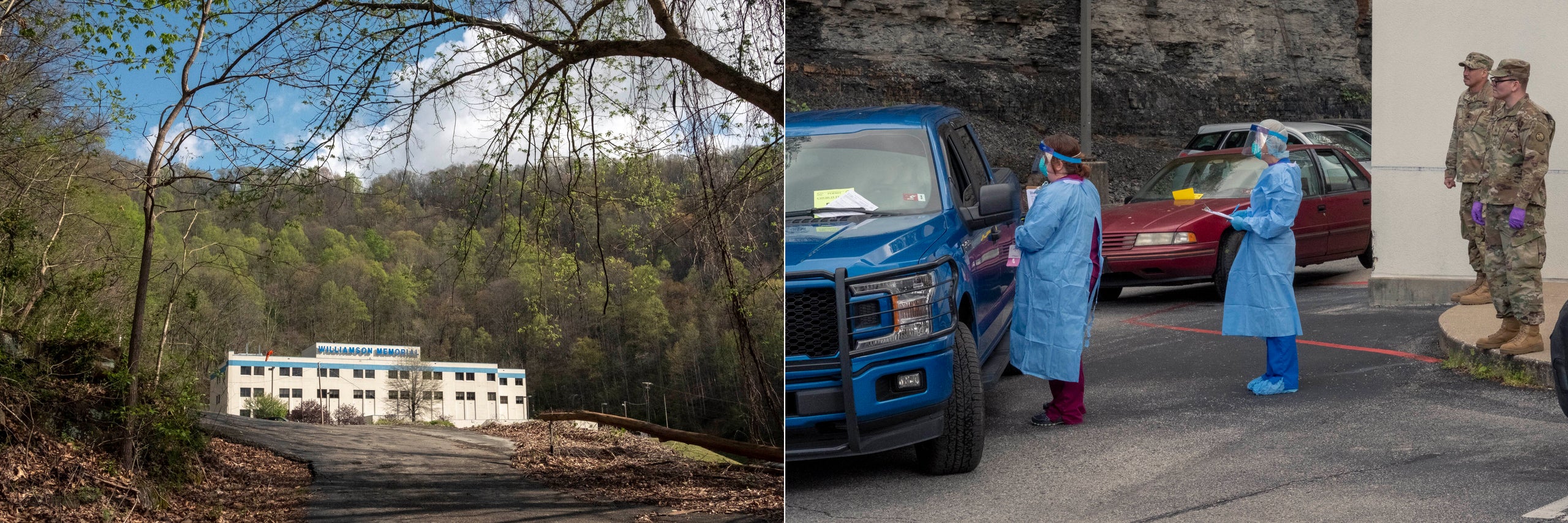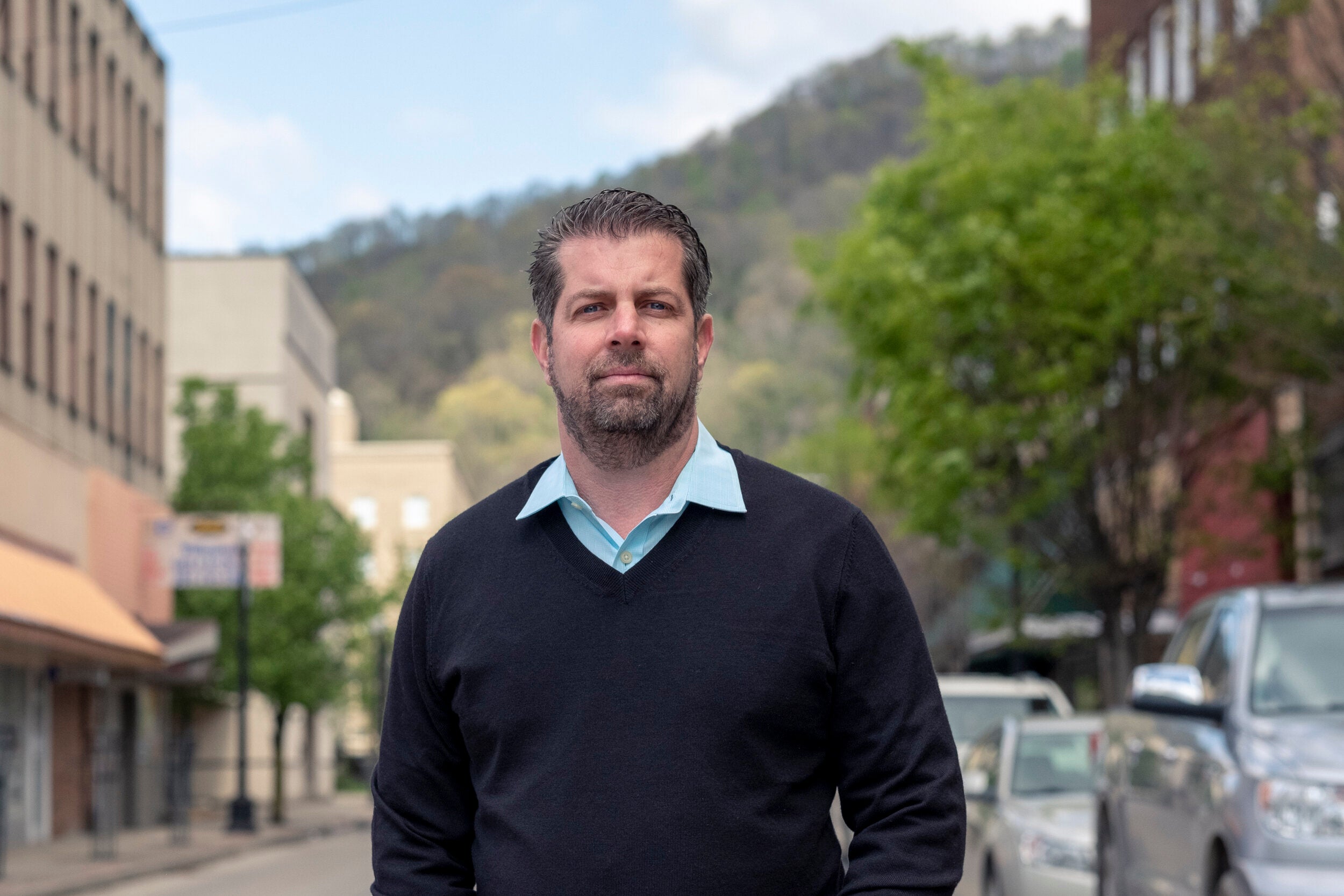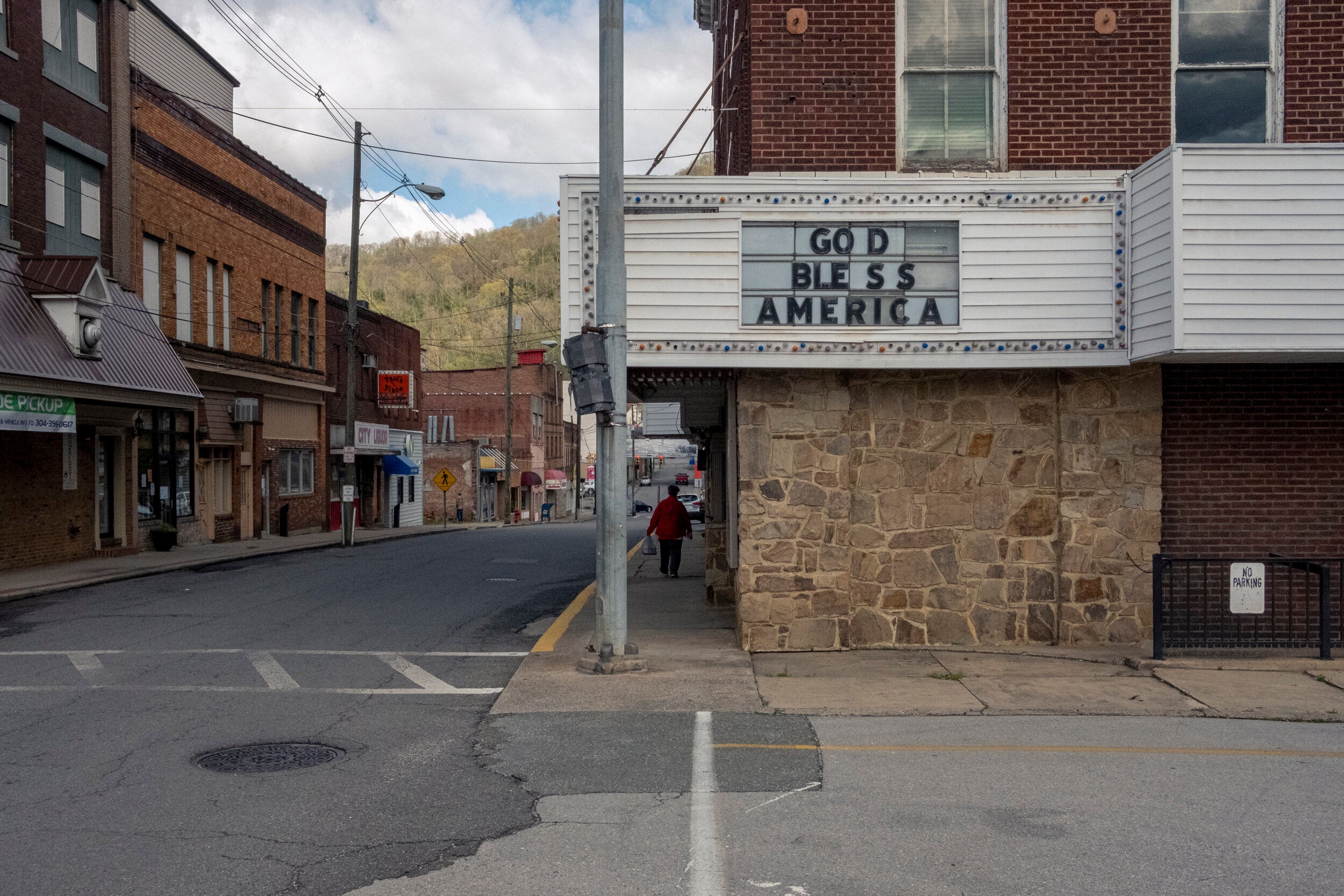As the coronavirus pandemic spread throughout March, two communities in West Virginia — a state whose health outcomes rank among the worst in the nation — grappled with the news that they were about to lose their hospitals.
Williamson Memorial Hospital, in the coalfields of southern West Virginia, announced plans to close on April 21, while Fairmont Regional Medical Center, located between the northern and eastern panhandles on the northern end of the state, closed on March 18.
Other health systems across the state have furloughed hundreds of medical personnel, and other hospitals teeter on the verge of financial collapse even as the demand for care seems likely to rise.
Projections from the University of Washington’s Institute for Health Metrics and Evaluation are less grim, anticipating a mid-April peak and fewer than 200 deaths in West Virginia ― down from the 500 projected last week.
Mingo County, where Williamson is located, announced its first confirmed case of COVID-19 over the weekend. The state had 626 people who had tested positive as of Monday, adding to the concern that rural areas may be on the verge of a surge.
But Debrin Jenkins, executive director of the West Virginia Rural Health Association, worries that the COVID-19 surge could arrive late in the state, long after coastal areas have recovered and virus fatigue has set in.

“My fear is this is going to roll over us after everybody is so emotionally, physically and mentally drained that no one will pay attention,” said Jenkins. “If you’ve got two paramedics in some town, and one or both get sick, who’s going to come and do anything for people when COVID-19 hits and they’re dying? You’re going to find people dead in their houses.”
“If someone gets ill and needs to be admitted, it’s a big problem if they have to go to a hospital in a neighboring state or 30 minutes away to another facility,” said C. Donovan “Dino” Beckett, a family physician and CEO of a nonprofit clinic that’s bidding to keep Williamson Memorial Hospital open.
“My fear is this is going to roll over us after everybody is so emotionally, physically and mentally drained that no one will pay attention,” said Jenkins. “If you’ve got two paramedics in some town, and one or both get sick, who’s going to come and do anything for people when COVID-19 hits and they’re dying? You’re going to find people dead in their houses.”
“If someone gets ill and needs to be admitted, it’s a big problem if they have to go to a hospital in a neighboring state or 30 minutes away to another facility,” said C. Donovan “Dino” Beckett, a family physician and CEO of a nonprofit clinic that’s bidding to keep Williamson Memorial Hospital open.
My fear is this is going to roll over us after everybody is so emotionally, physically and mentally drained that no one will pay attention.
Debrin Jenkins, West Virginia Rural Health Association
While some of these hospitals are outdated in the health care arms race for the latest equipment and procedures, they still play an important role in communities with few other options.
They are also economic engines, often serving as the largest or second-largest local employer. For a community like Williamson and Mingo County, whose coal production helped fuel the United States’ 20th-century rise as a superpower but has since seen jobs rapidly dwindle, the hospital closing represents another loss of 150 jobs.
A Crisis Before The Crisis

The COVID-19 pandemic is ripping through rural health care providers, and measures designed to prepare for the virus are compounding long-running structural problems to decimate medical providers and local economies across America.
“Before the pandemic, we had almost half of rural hospitals operating at a financial loss, just barely hanging on,” said Maggie Elehwany, vice president of government affairs for the National Rural Health Association. “Now, I can safely say that nearly every rural hospital in the country is operating at a financial loss. We’re hearing that their operating margins have dropped by 60% or 80%. We’re hearing from a couple of folks that they’re operating with only a couple of days of cash on hand.”
The rural health infrastructure has taken systemic hits for years: a patient population that is growing older and poorer, reductions in Medicare reimbursement rates, and a long series of significant budget cuts to government health care and other safety net programs that disproportionately affect minorities and other vulnerable populations.
Before the pandemic, we had almost half of rural hospitals operating at a financial loss, just barely hanging on.
Maggie Elehwany, National Rural Health Association
West Virginia expanded Medicaid in 2014, which may have helped it avoid hospital closures there until this year. Tennessee, on the other hand, did not expand Medicaid and has seen 13 hospitals close since 2010. Another is set to close next week.
Those factors all reduced the amount of revenue that hospitals were taking in, which in turn hurt their ability to attract medical personnel and invest in new technology, which makes it even harder to attract patients.
“Whether it’s non-profit or for-profit, the hospital still has to bring in more revenue than it’s spending,” said Adam Searing, a research professor at Georgetown University McCourt School of Public Policy’s Center for Children and Families. “Hospital executives say, ‘No margin, no mission.’”
The North Carolina Rural Health Research Program at the Cecil G. Sheps Center for Health Services Research has tracked 128 rural hospitals that have closed since 2010. It seems like the problem is getting worse: 19 hospitals closed in 2019, the most since the center started tracking closures in 2005.
Now, 2020 is on pace to set a new record, with eight closures as of early April. Many hospitals halted nonemergency procedures in March to limit exposure for staff and patients, which has eviscerated income that many rural hospitals received for routine procedures. That’s amplified the financial distress among health care providers.
West Virginia has been hit particularly hard, said Jenkins: “Most of our hospitals in West Virginia, maybe all of them, are operating in the red.”

West Virginia’s struggling hospitals serve a state with “the highest number of negative health outcomes in the nation,” Jenkins said.
“We see high rates of diabetes, heart disease, obesity, high blood pressure and hepatitis C,” she said. “We’ve got a huge substance abuse issue that’s really going strong in the southern counties. In a couple of counties, 75% of kids live with someone other than their parent — most often a grandparent in poverty.”
Not only does West Virginia have an aging population, but aging medical providers, Jenkins said. The average age of state residents is 43, and the average age of medical providers is 48. The state’s population as a whole has declined and is projected to continue to drop through at least 2030. Those trends have caused a thinning of the ranks in the state’s patchwork system of emergency responders, which include volunteer, government-funded and privately run ambulance services.
Seeking Sustainable Solutions
Relief for health care providers may be on its way — and it can’t arrive quick enough.
“For the short term, policies that would help rural hospitals mainly revolve around propping up their cash flow,” said Jessica Ice, executive director of West Virginians for Affordable Health Care. “Direct cash payment, increases in Medicaid and Medicare reimbursement rates, no-interest loans. Policies that get money to rural hospitals so that they can keep their doors open would be the most useful during this crisis.”
The $2 trillion federal relief package Congress passed includes $100 billion for hospitals, but it’s unclear how that money will be divided. The National Rural Healthcare Association is lobbying for at least 20% of the money to go to rural hospitals. Even then, it’s unlikely that West Virginia will receive a large sum, given its relatively low number of cases, or that the money will arrive in time to prevent more hospitals from closing.
Medicaid may provide more of a short-term solution, at least for ensuring that health care providers receive compensation for services.
“Medicaid has always been the workhorse of the health coverage world,” said Dustin Pugel, senior policy analyst at the Kentucky Center for Economic Policy. “I can only imagine that, as Medicaid starts picking up a ton of people who have lost their coverage at work and who are temporarily in need of significant medical services, people are going to start to understand how powerful Medicaid is as a public health tool.”
West Virginia is also seeing local and state leaders taking matters into their own hands. On March 13, before the state began ramping up restrictions due to the pandemic, West Virginia University and state Gov. Jim Justice (R) announced the university will build a new 100-bed hospital in Fairmont, while providing some level of medical service during the year and a half to two years required for construction.

In Mingo County, two days after the closure announcement for Williamson Memorial, a federal bankruptcy judge approved a $3.7 million bid from Williamson Health & Wellness, a locally owned nonprofit clinic, to purchase it. The clinic’s plans are still a bit uncertain, and the deal doesn’t doesn’t close until April 30, nine days after the hospital is scheduled to shut its doors.
Beckett, the CEO of Williamson Health & Wellness, volunteered at the hospital as a young man and did several rotations there as a medical student. Two of his children were born there, and his wife now works as a physician’s assistant in its emergency room.
Beckett started his own practice in Williamson in 2003, and opened a free clinic within that practice in 2011. The clinic grew and received designation as a federally qualified health center in 2013 before relaunching as Williamson Health & Wellness the following year.
Today, the clinic employs 99 people and has 33,000 patient visits each year. Scaling up into Williamson Memorial will require a partner to run the actual hospital operations, and while Beckett said he’s had conversations with several interested parties, the details remain uncertain.
Beckett hopes to bring a sense of permanence to a hospital that spent much of the last four decades as part of for-profit hospital chains. Its current owners, Mingo Health Partners LLC, obtained the hospital in 2018 but filed for bankruptcy a year later before furloughing 20 employees in January and then announcing the closure at the end of March.
“We see this hospital as a very important part of the community,” Beckett said. “We bought it, and now we have to get these other components in place for it to actually happen.”
A HuffPost Guide To Coronavirus
Calling all HuffPost superfans!
Sign up for membership to become a founding member and help shape HuffPost’s next chapter
Credit: Source link